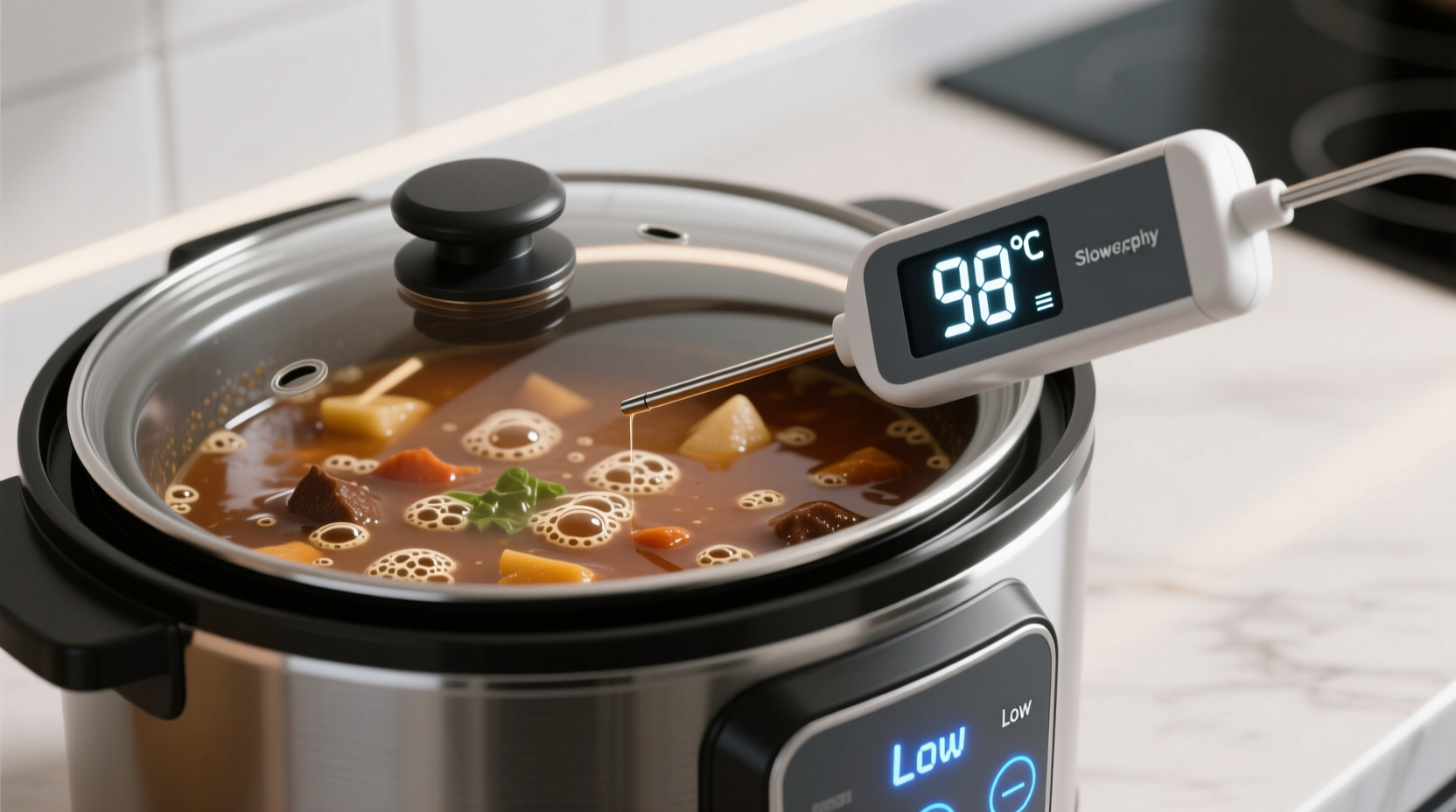Understanding your slow cooker's precise temperature settings is crucial for both food safety and culinary success. While many home cooks rely on slow cookers for convenience, few realize that the "low" setting operates within a specific, scientifically determined range that keeps food safely out of the bacterial danger zone while allowing collagen to break down slowly for exceptional tenderness.
How Slow Cookers Maintain Safe Cooking Temperatures
Slow cookers function differently than conventional ovens by using low-wattage heating elements that gradually warm ceramic or metal inserts. The "low" setting typically reaches 190-200°F (88-93°C) after several hours of preheating, maintaining this temperature range throughout the cooking process. This is significant because it keeps food safely above the USDA's recommended minimum internal temperature of 140°F (60°C), the threshold where harmful bacteria begin to die off.
Unlike stovetop or oven cooking where temperatures can fluctuate, slow cookers provide remarkably consistent heat distribution. This consistency explains why recipes specifically designed for slow cooking often yield superior results compared to improvised adaptations of conventional recipes.
| Slow Cooker Setting | Temperature Range | Equivalent Oven Temperature | Typical Cooking Time |
|---|---|---|---|
| Low | 190-200°F (88-93°C) | 200°F (93°C) | 7-10 hours |
| High | 280-300°F (138-149°C) | 300°F (149°C) | 3-4 hours |
| Warm | 165-175°F (74-80°C) | N/A | 1-4 hours |
Why Temperature Precision Matters for Food Safety
The USDA Food Safety and Inspection Service emphasizes that slow cookers must maintain temperatures above 140°F to prevent bacterial growth. The "low" setting's 190-200°F range ensures food passes through the danger zone (40°F-140°F) within 2-3 hours, significantly reducing foodborne illness risks. This temperature sweet spot allows connective tissues in meats to break down gradually without causing proteins to seize up and become tough.
Food science research from the National Center for Home Food Preservation confirms that maintaining temperatures above 185°F for extended periods effectively destroys common pathogens while preserving moisture and nutrients better than higher-heat methods. This explains why slow-cooked dishes often have superior texture and flavor complexity compared to pressure-cooked alternatives.

When to Choose Low Setting vs. High Setting
Selecting the appropriate setting depends on both your schedule and the ingredients you're using. The low setting works best for:
- Tougher cuts of meat with significant connective tissue (chuck roast, pork shoulder)
- Dishes requiring 8+ hours of cooking for optimal texture development
- Situations where you'll be away from home for extended periods
- Recipes specifically developed for slow cooking methods
Consider the high setting when:
- You need to prepare a meal in 4-6 hours
- Using leaner cuts of meat that might dry out with prolonged cooking
- Cooking delicate ingredients that could overcook with extended heat
- Adapting conventional recipes not specifically designed for slow cooking
Practical Tips for Optimal Slow Cooking Results
For best results with the low setting, follow these evidence-based recommendations:
- Preheat your slow cooker with a cup of water for 15-20 minutes before adding ingredients to ensure immediate temperature control
- Fill between one-half and three-quarters full for optimal heat distribution (USDA Complete Guide to Home Canning)
- Brown meats first to develop richer flavors through the Maillard reaction before slow cooking
- Limit lid removal as each opening can drop the internal temperature by 20°F for up to 20 minutes
- Use room-temperature ingredients to help the cooker reach safe temperatures more quickly
Troubleshooting Common Low Setting Issues
If your slow cooker isn't performing as expected on low setting, consider these factors:
- Older models may run cooler - verify actual temperature with a separate thermometer
- Altitude affects boiling points - at 5,000 feet, water boils at 203°F instead of 212°F, requiring longer cooking times
- Overfilling can prevent proper heat circulation and temperature maintenance
- Cold ingredients significantly delay reaching safe temperatures
- Power fluctuations can cause temperature variations in older units
For precise temperature verification, the National Center for Home Food Preservation recommends using a calibrated oven thermometer placed directly in the cooking liquid. This simple step ensures your slow cooker maintains the proper 190-200°F range throughout the cooking process.
Adapting Cooking Times Between Settings
Understanding the relationship between low and high settings allows for flexible meal planning. As a general rule:
- 3-4 hours on high = 7-10 hours on low
- Always check internal temperatures with a food thermometer regardless of cooking time
- Delicate ingredients (fish, dairy) typically require high setting with reduced time
- When converting conventional recipes, reduce liquid by 25% as evaporation is minimal
Remember that these are guidelines rather than exact conversions, as ingredient composition significantly affects cooking dynamics. Dense foods like whole potatoes will require proportionally longer cooking times than liquid-based stews.











 浙公网安备
33010002000092号
浙公网安备
33010002000092号 浙B2-20120091-4
浙B2-20120091-4